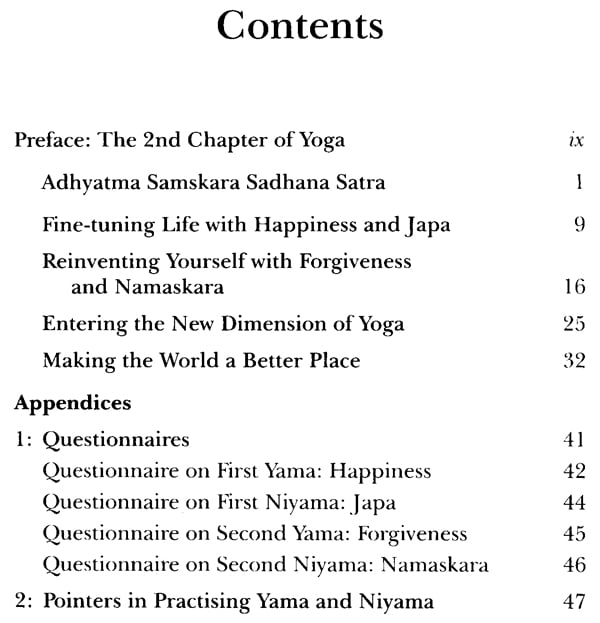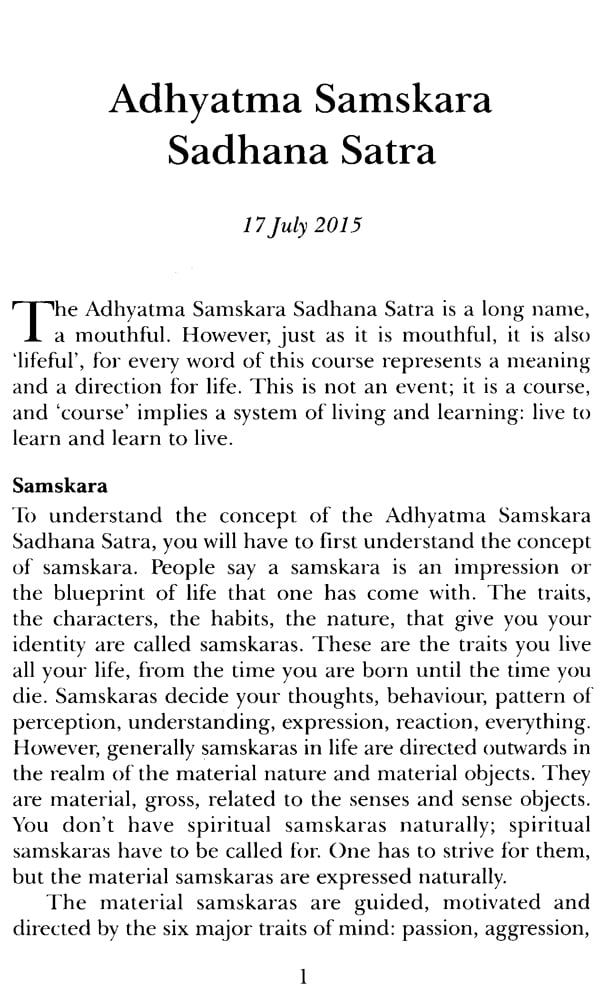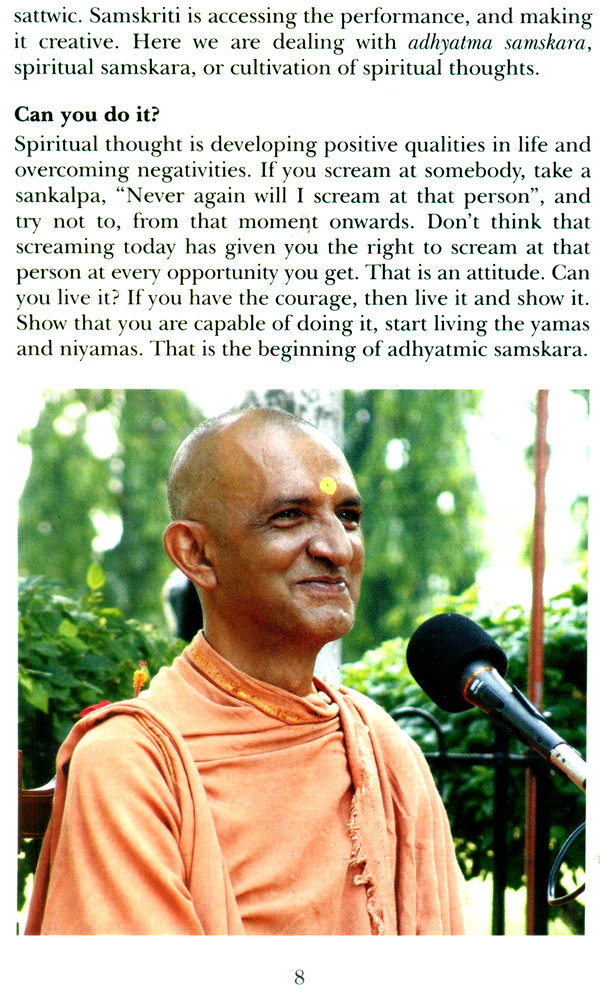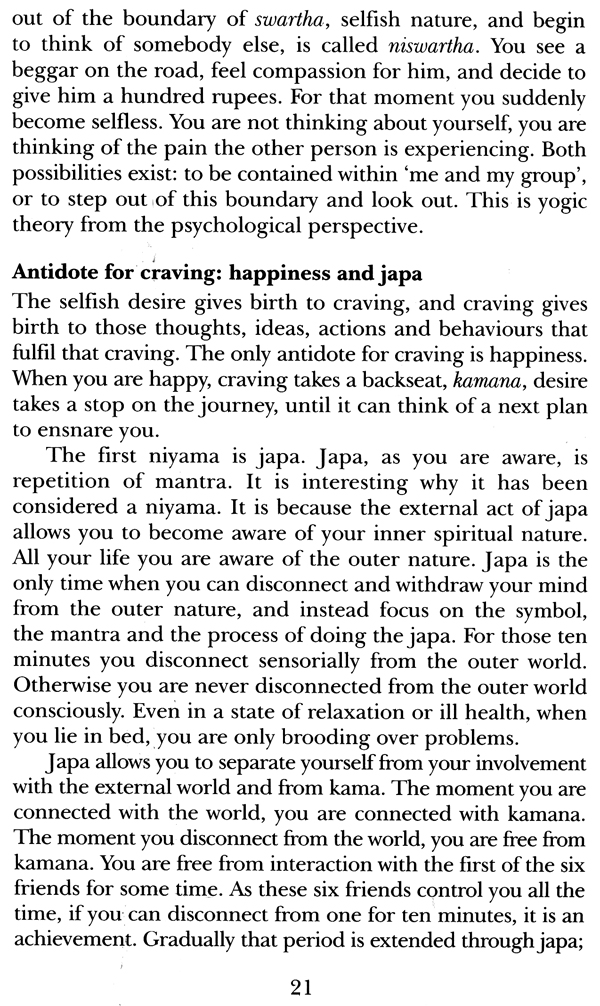
Yoga Chakra- Cultivating Spiritual Samskara (Part-2)
Book Specification
| Item Code: | NAZ545 |
| Author: | Swami Niranjanananda Saraswati |
| Publisher: | Yoga Publications Trust |
| Language: | English |
| Edition: | 2015 |
| ISBN: | 9789384753283 |
| Pages: | 50 (Throughout Color Illustrations) |
| Cover: | PAPERBACK |
| Other Details | 8.50 X 5.50 inch |
| Weight | 100 gm |
Book Description
Swamiji explained that the path is laid out in the yam as and niyamas, the positive attributes of life. Usually people refer to the yamas and niyamas listed by Sage Patanjali. but Swamiji delved into those presented in other yogic and spiritual literatures.
Two yamas: happiness and forgiveness. and two niyarnas: japa and namaskara were taken up. Participants were also given questionnaires and asked to maintain a spiritual diary so they can cultivate these four qualities in their life as a sadhana.
This book presents the satsangs and also includes the questionnaires.
It was not seen as something that could be incorporated into society and practiced by the general public.
When the Bihar School of Yoga was established, the philosophy, practices, applications and lifestyle of yoga as practical and scientific systems were unknown, even in Indian society.
From the beginning, yoga training and propagation by the Bihar School of Yoga took the form of intensive residential programs, in which yoga was taught as a way to qualitatively enhance physical health, mental peace, emotional harmony. A sequence of progression in yoga was defined fifty years ago by Swami Satyananda, by giving systematic training first in hatha yoga, raja yoga, and kriya yoga, as bahiranga yoga, external yoga. Simultaneously, training in antaranga, internal, aspect of karma yoga, bhakti and jnana yoga was provided through the lifestyle and inspiration of the ashram environment. A holistic or integral yoga system developed in which the yoga aspirant could awaken and integrate the faculties of head, heart and hands. The different angas, limbs, of yoga become the means of attaining this personal harmony and integrated expression.
In the early 1940s, the subject of yoga was propagated across the world by teachers and masters of different traditions, introducing the idea that through the practice of yoga one could explore the body, mind, emotions, and have a glimpse into one's spiritual nature. The first-generation teachers focused on bringing the knowledge of yoga to human society according to the need of the society at that time. In the 1960s, yoga was seen as a physical culture. In the 1970s, it was seen as a way to overcome stress, anxiety, tension and to improve the physical and mental functions. In the 1980s, research into the various possibilities and potentials of yoga to assist and promote physical and mental health took the forefront. By the 1990s, a rapid increase in the popularity of the practice of asana was evident across the globe. The asana component of yoga had been accepted worldwide and other components of yoga were relegated to the background and largely ignored by the mainstream practitioners and majority of yoga teachers. Today, 28 million people are practicing yoga in the United States alone and statistics estimate 300 million practitioners worldwide.
In 2013, the World Yoga Convention was conducted in Munger to celebrate the Golden Jubilee of the Bihar School of Yoga. Over 50,000 yoga practitioners, teachers, students and aspirants participated in this historic event either in person or through the internet. The Convention was a milestone that marked the completion of fifty years of yoga propagation. The mandate of taking yoga from shore to shore and door to door was fulfilled. Over a fifty-year period, with the help of yoga aspirants and well-wishers all over the world, a yogic renaissance had taken place. The chapter of yoga propagation was' complete and when one chapter closed, the next chapter opened.
Book's Contents and Sample Pages










